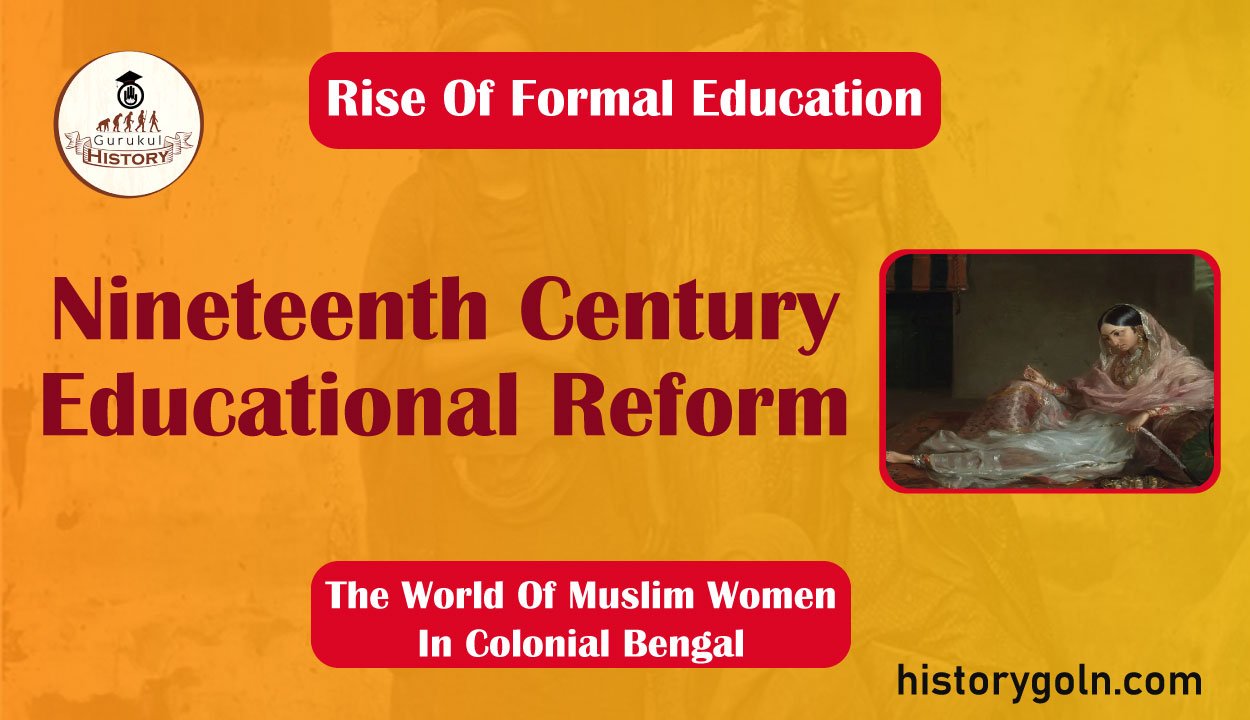Today our topic of discussion is Nineteenth Century Educational Reform .
Nineteenth Century Educational Reform

The development of female education in Bengal followed four broad courses, not always in chronological order. The Christian missionaries in Bengal were the pioneers in the field. 12 In their project of ‘redeeming lost souls’ and expanding the dominion of Christianity, they realized that education could play a significant role. Before the lull in the period 1830-1870, there were several attempts at female education in the metropolis (Calcutta). Dhaka and a few other regions.
Surprising though it may seem, Muslim girls were visible in the earliest projects in female education in Calcutta, undertaken at the behest of Christian missionaries often in conjunction with local residents. 13 Samachar Darpan (1820) in its December 27 issue stated: “At 10 o’clock in the morning of Friday… an examination was held at Gouribari, Calcutta. About 150 Hindu and Muslim girls participated in the examination.”
This must have been one of the examinations of the Juvenile School, a missio-nary enterprise conducted under the aegis of the Female Juvenile Society at Gouribari. A similar examination was held the following year.
The second initiative came from company officials and British residents in Bengal. The third important advocate of female education was a section of the urban elite in Bengal, the rising bhadrolok class itself, first from the Hindu/Brahmo, then from the Muslim, community.

The colonial govern- ment comprised a fourth major and powerful channel for development of education in Bengal, but its role in this sphere went through various phases.15 In the first flush of institutional education for girls, local residents of Calcutta were by the side of the missionaries. The Central Female School Foundation was laid on 18th May, 1826, in “an aristocratic Hindu neighbourhood of Calcutta” near Cornwallis Square.
Raja Baidyanath Ray had donated Rs.20,000 for the school at the request of his wife. Lady Amherst laid the stone, and the school was formally opened in 1828. Accor- ding to J. C. Bagal, another missionary venture of the name of ‘The Ladies Association’ founded about twelve girls’ schools in Calcutta around 1827. “About 160 girls studied in these schools, most of them Muslims.”
An English lady, Miss Mary Ann Cook founded eight schools for girls in various parts of Calcutta between 1821-22. Pricilla Chapman provides contemporary references to Muslim girl’s education in her book Hindu Female Education, published from London in 1839. According to her Miss Cook was assisted by a Muslim lady in setting up a girls school in Shyam- bazar, Calcutta. This lady whose identity has never been established, set up the Shyambazar school with 18 girls. The number soon reached 45.
Many will find this enthusiasm on part of a Muslim mohila (sic) for female education quite amazing given that the men of that community in Calcutta were not well disposed to the education system of the English. For a Muslim lady to be inspired by such zeal… was indeed a wonder.17
Unfortunately, these schools were short-lived and a really enduring insti tution was not set up till 1849, when J.E.D. Bethune founded the famous school in Calcutta which still bears his name. After 1825 these initial ventures petered out as native suspicion and indignation regarding prose- lytization, mounted.
Upper class households whether high caste Hindu or sharif Muslim were very slow in opening the door of institutional education to their female wards. The enrollment at these schools was mostly from the lower to middling strata as well as from the native christian community.
By the second half of the nineteenth century the local populace’s attitude to female education had hardened, due in great measure to the proselyti- zing aspect of missionary schools. But in the 1870s women’s education, more specifically, that of Hindu and Brahmo women, received a boost.
A conglo- meration of events made this possible: government patronage through dele- gating a major share of its responsibility to the newly constituted munici- palities: expansion of the Brahmo samaj which could now seriously take the matter in hand; and mobilization among the local people.

The government had started taking an interest in the matter approximately some time after Wood’s Education Despatch of 1854. But the uprising of 1857 made it very wary of moving too fast in the direction of education (or other) reform and the women’s cause received a temporary net-back. But the parallel, local ventures did not stop and in many instances these inadequately funded. and ill attended schools were all that there was.
See more:
